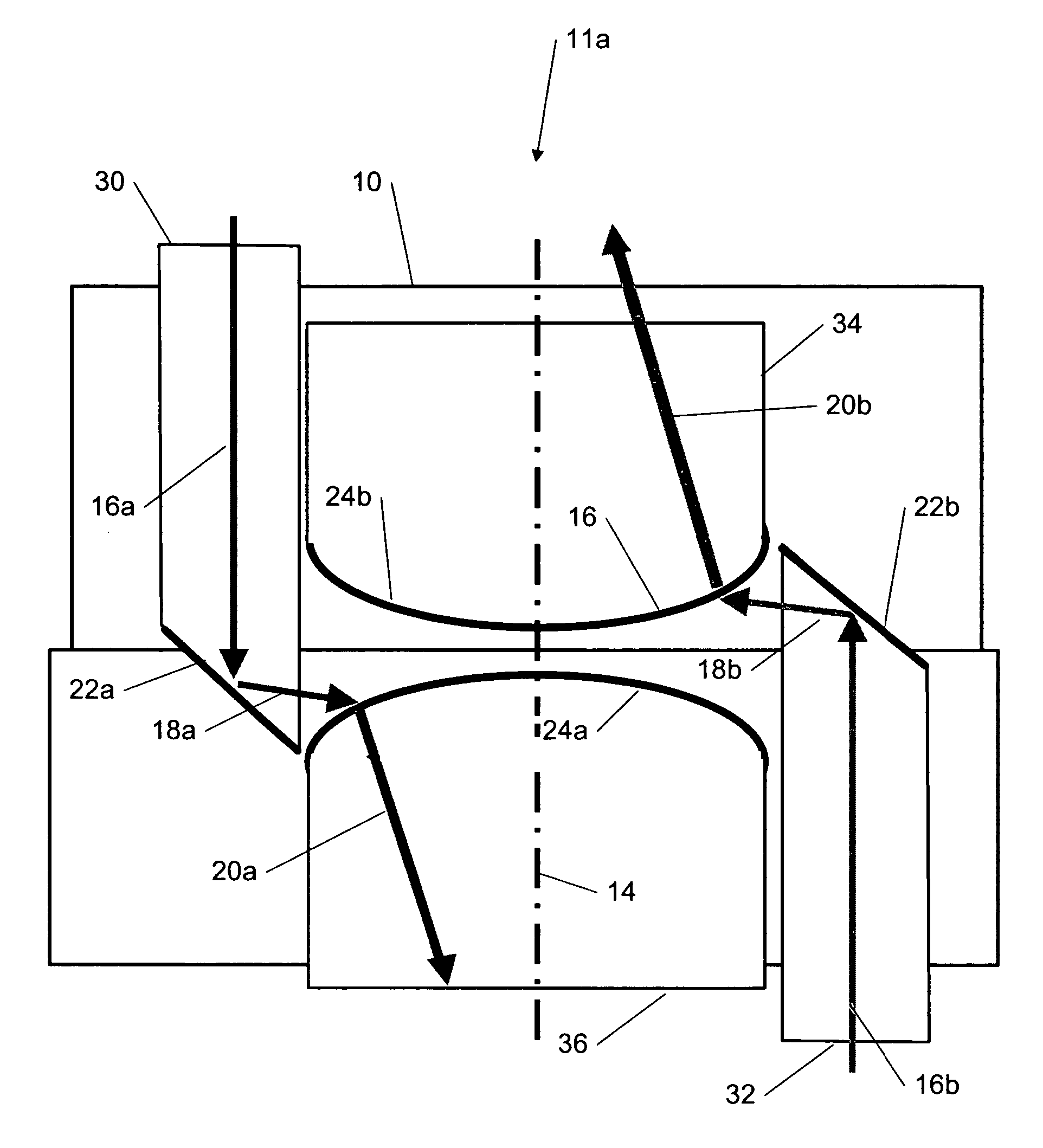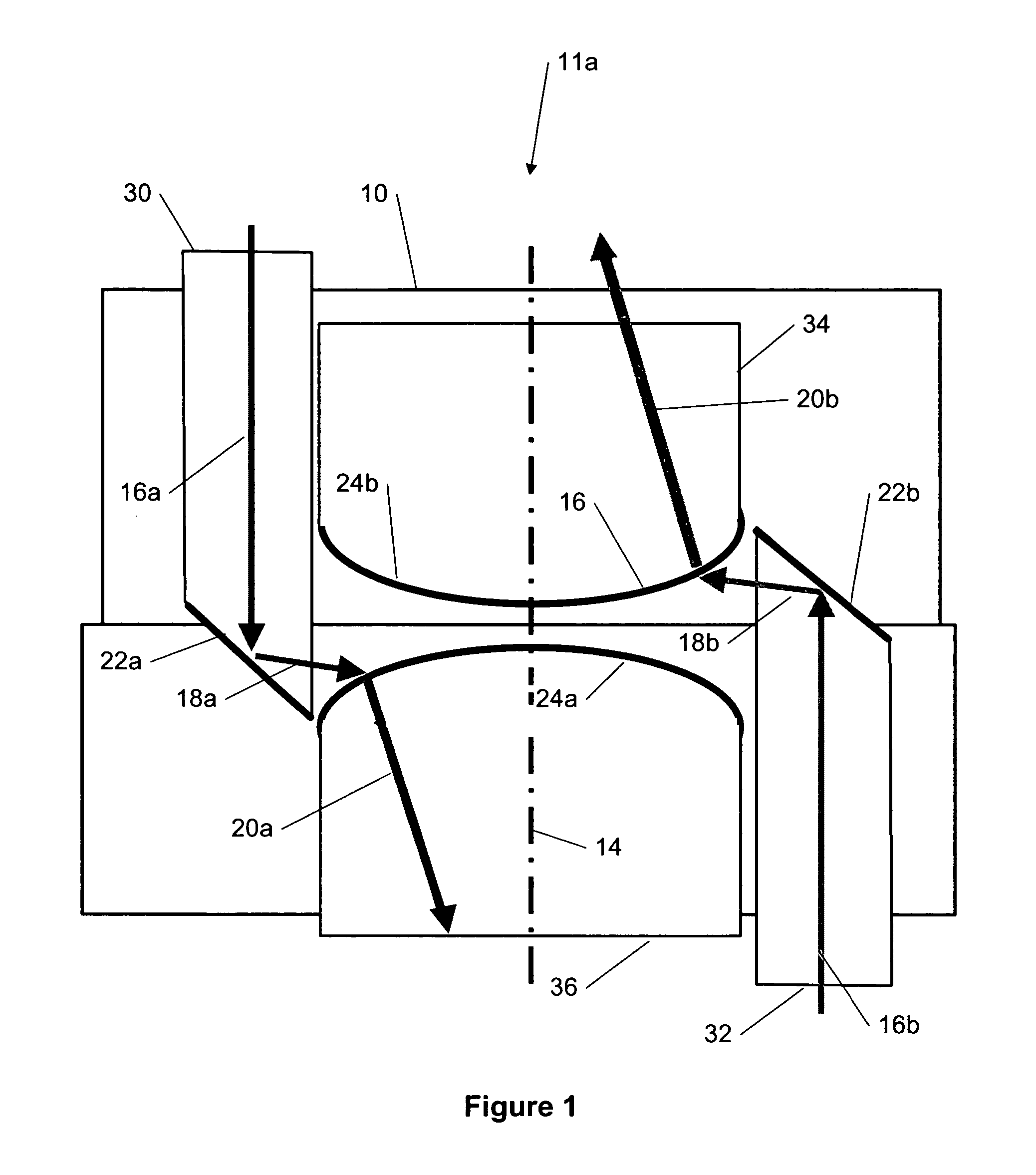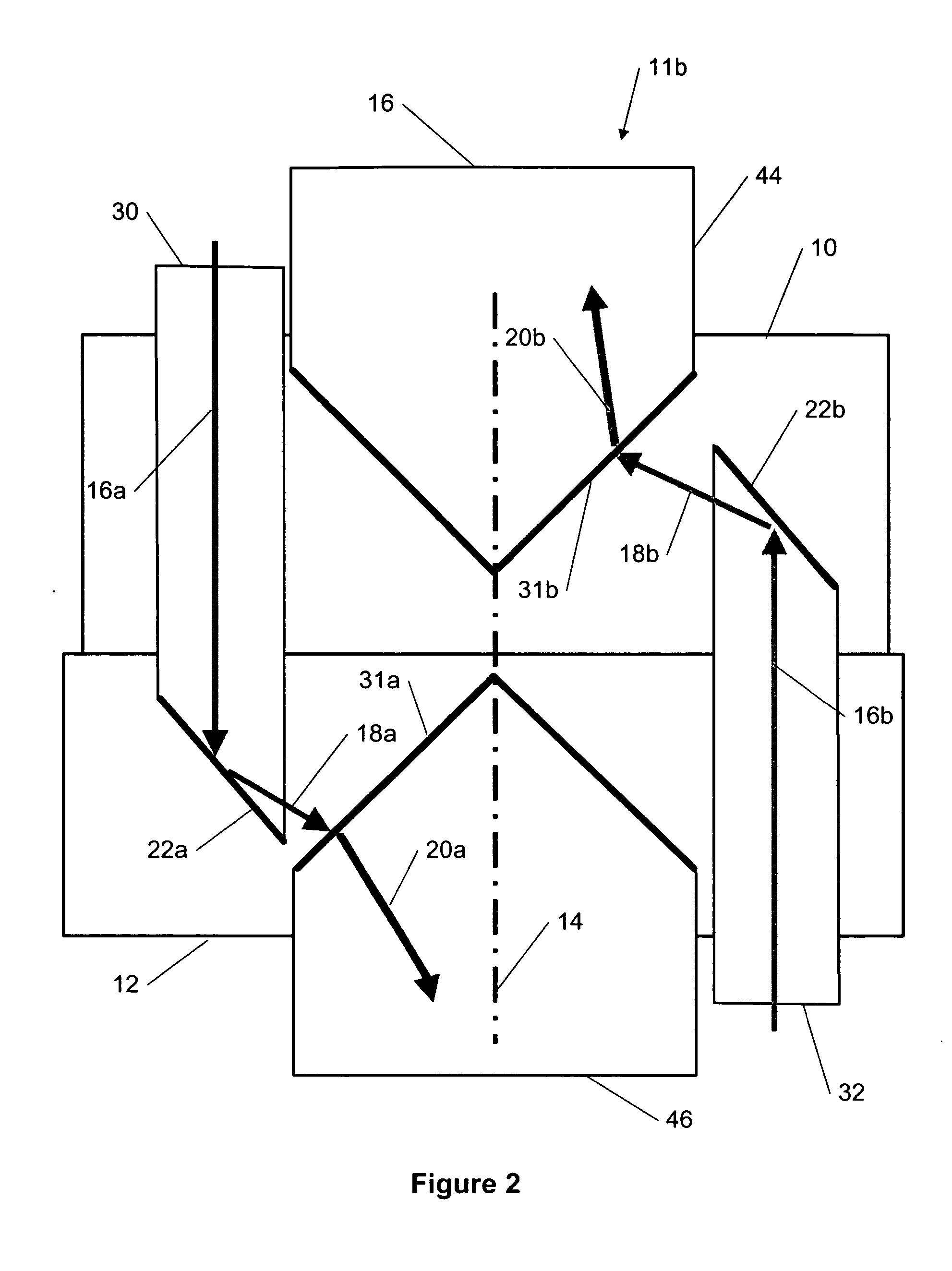Optical bi-directional rotary hinge
- Summary
- Abstract
- Description
- Claims
- Application Information
AI Technical Summary
Benefits of technology
Problems solved by technology
Method used
Image
Examples
Embodiment Construction
[0040] A new apparatus and method for a rotary hinge for transmitting an optical signal bi-directionally or uni-directionally from one part to another in an electronic device, wherein these parts can rotate relative to each other using the rotary hinge. The optical signal can be transferred from one side to the other side of the hinge independently from light transmitted in the other direction. The hinge can be rotated without angular limitation if no other means (e.g. electrical cables) hinder that. The electronic device can be (but is not limited to) a camera, a camera-phone, a wireless device, a portable electronic device, a mobile terminal, a mobile phone, etc.
[0041] The rotary hinge comprises a first hinge part which is rigidly connected to a first part of the electronic device and a second hinge part which is rigidly connected to a second part of the electronic device, wherein said first and second hinge parts, and therefore the first and the second parts of the electronic de...
PUM
 Login to View More
Login to View More Abstract
Description
Claims
Application Information
 Login to View More
Login to View More - Generate Ideas
- Intellectual Property
- Life Sciences
- Materials
- Tech Scout
- Unparalleled Data Quality
- Higher Quality Content
- 60% Fewer Hallucinations
Browse by: Latest US Patents, China's latest patents, Technical Efficacy Thesaurus, Application Domain, Technology Topic, Popular Technical Reports.
© 2025 PatSnap. All rights reserved.Legal|Privacy policy|Modern Slavery Act Transparency Statement|Sitemap|About US| Contact US: help@patsnap.com



